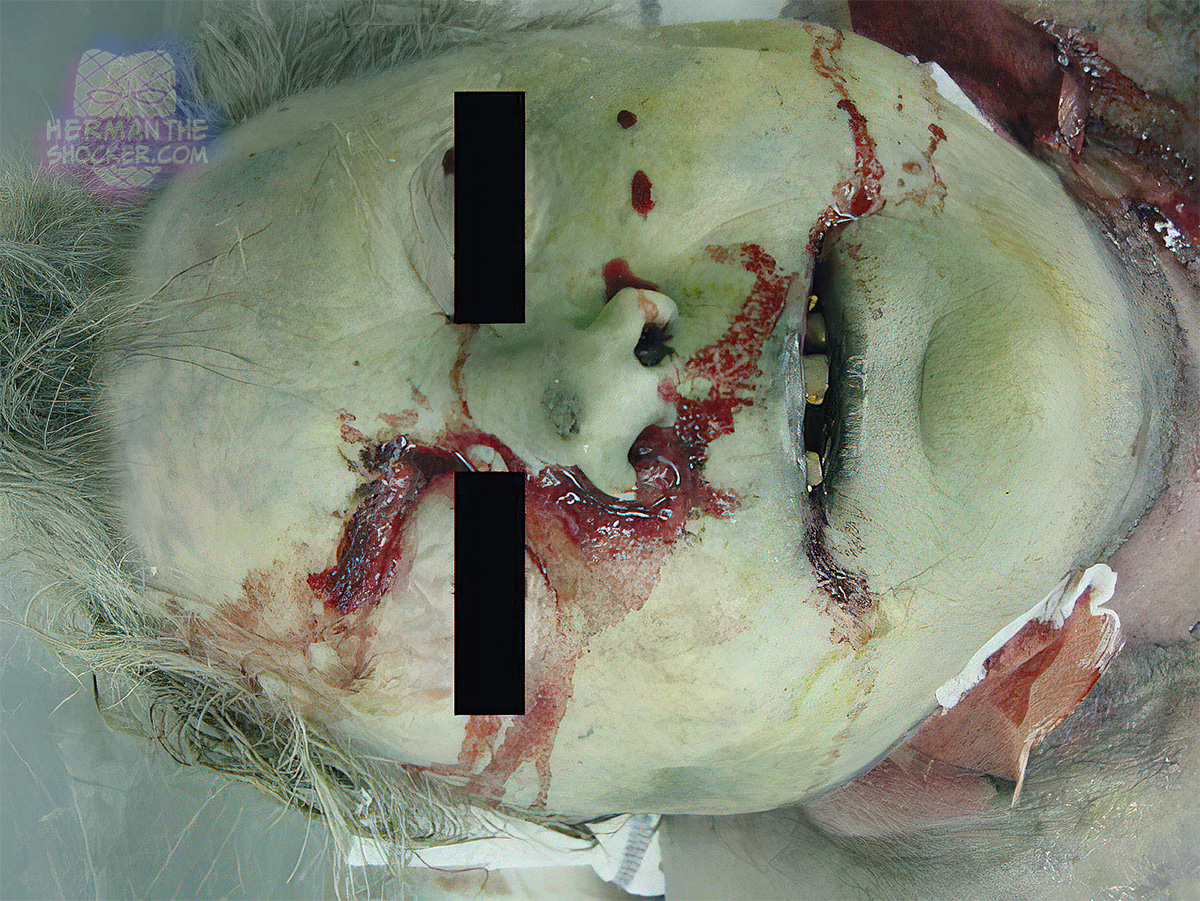This individual has greenish putrefaction skin discoloration and purging of putrefactive fluid from mouth and nostrils. During the natural decomposition process, lipids, proteins and carbohydrates are broken down into smaller molecules. These decomposition by-products are the major components in decomposition fluid. The decomposition process also causes the release of gases such as methane and hydrogen sulphide. The build-up of gases (known as bloating) causes the fluids and gases to escape from the orifices of the body and eventually leads to rupturing of the skin.
Decomposition, or putrefaction, is a combination of two processes: autolysis and bacterial action. Autolysis is the breakdown of cells and organs through an aseptic chemical process caused by intracellular enzymes. Because it is a chemical process, it is accelerated by heat, slowed by cold, and stopped by freezing. Bacterial action results in the conversion of soft tissues in the body to liquids and gases. The chemicals produced as a result of the putrefaction are cadaverine and putrescine, hydrogen sulfide and other sulfides, which generate a horrible smell.
Latest posts








